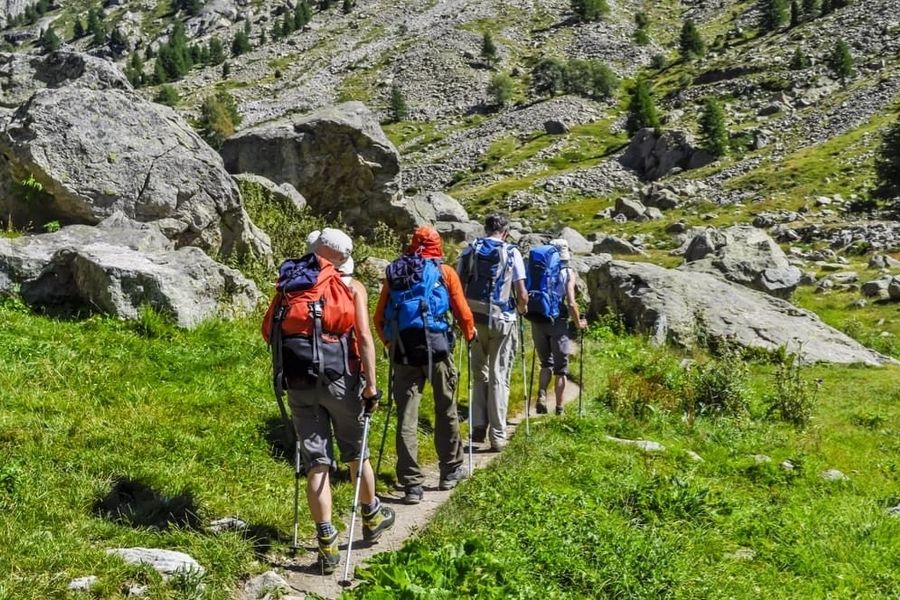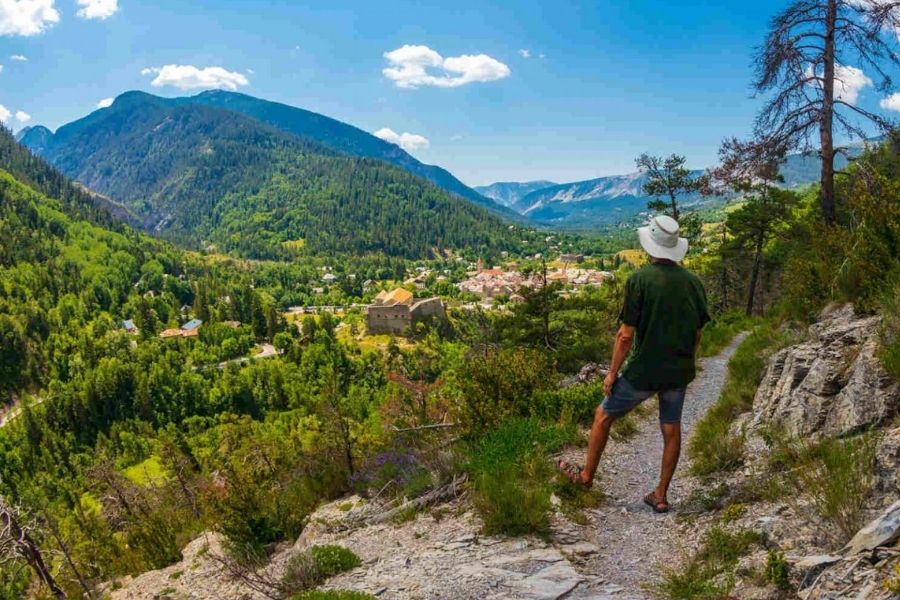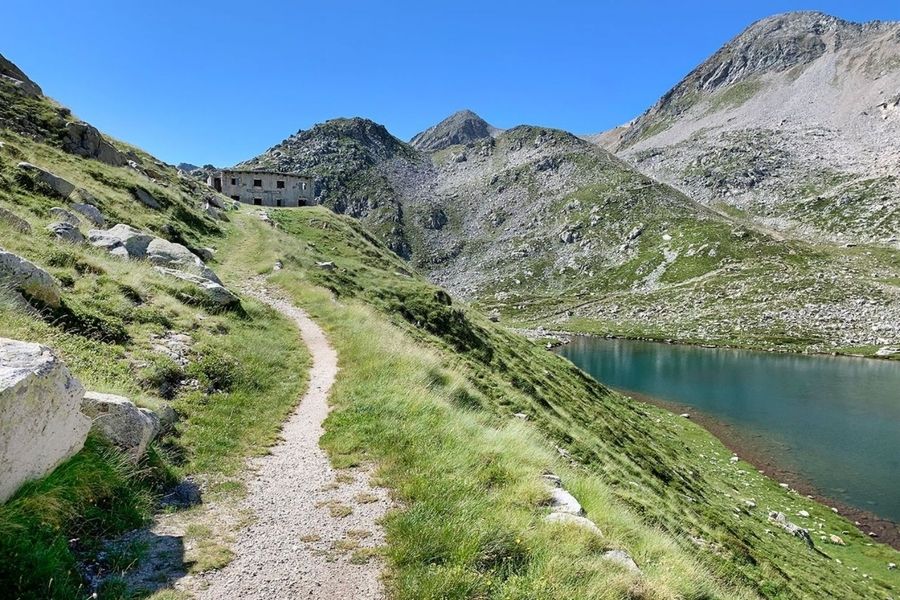If you’re always searching for a mountain escape, you’ll probably agree: Mercantour National Park and the Vallée des Merveilles feel most magical when wildflowers burst into color and trails are clear. Honestly, the best time to hike these Alpine gems is late spring through early fall—think June to September—when the snow’s gone, the sun’s out, and the heat isn’t overwhelming. Wildflowers take over the valleys, and every day brings a fresh, jaw-dropping view.
Walking here, I sometimes wonder if I’ve stepped into a real-life postcard. Towering peaks, shimmering lakes, and those ancient rock carvings—there’s always something to gawk at. But when you visit? That’s crucial. Catching the wild colors in June or soaking up the golden light in September can turn a regular hike into something you’ll never forget.

Ever wondered what it’s like to wander through scenery straight out of a storybook? I’ll help you figure out the best months for exploring Mercantour and Vallée des Merveilles. Stick around for my honest take on the seasons, what you’ll find on the trails, and a few tips to make your own adventure one for the books.
Understanding Mercantour & Vallée des Merveilles
Southeastern France hides Mercantour and the Vallée des Merveilles, a region where you’ll find wild peaks, mysterious carvings, and rare wildlife all coming together. I keep coming back because it’s just so different—nature and culture mixing in a way the rest of the Alps can’t quite match.
Overview of the Region
Mercantour National Park hugs the border between France and Italy. It covers over 650 square kilometers, stretching from high Alpine ridges to Mediterranean foothills. The scenery changes fast—one minute I’m next to glaciers, the next I’m surrounded by green meadows covered in wildflowers. The real highlight, though, is the Vallée des Merveilles, famous for its 5,000-year-old rock engravings.
Trails here are well-marked, so I rarely get lost, even when I’m way out from the nearest village. Mountain huts, or refuges, pop up just when you need them on a multi-day trek.
In summer, I see everyone from families to hardcore hikers sharing the same paths. It’s a friendly vibe.
Unique Nature and Wildlife
The biodiversity in Mercantour is wild—over 2,000 plant species, including Edelweiss and Alpine lilies. If I start early, I sometimes spot chamois and ibex picking their way across rocky slopes.
Birdwatchers can catch golden eagles and bearded vultures gliding above the valleys. One afternoon, I watched a marmot colony sun themselves near a stream, which was just delightful. Lynx and wolves live here too, but honestly, I’ve never seen them—they’re shy.

The terrain changes fast, so I always prep for both lush valleys and exposed ridges. Snow can linger into late spring, so I never leave my gear to chance.
Mercantour National Park Highlights
The Vallée des Merveilles, with its 30,000-plus ancient rock engravings, is the park’s big draw. I recommend going with a guide—otherwise, the mysterious symbols and stories can go right over your head.
Allos Lake is another spot I never skip, especially in June when wildflowers explode and the water turns that unreal blue. High passes, tiny alpine villages (with the best cheese), and endless marked trails mean there’s always a new adventure waiting.
I love that, whether you’re here for the history, the wild beauty, or just some solitude, you’ll find your spot.
When to Hike: Navigating the Seasons
Mercantour and Vallée des Merveilles change their mood with every season. I’ve learned that the best time for hiking depends on what you’re after—scenery, weather, or trail conditions.
Spring Hikes: Blossoms and Cooler Trails
When snow melts in May and June, lower trails open up first. Wildflowers take over, splashing the meadows with color. I especially love spotting alpine gentians and buttercups along the way.
Temperatures stay cool, so you can hike longer without overheating. Fewer people hit the trails, making it feel peaceful. Bring a light jacket, though—mornings get chilly.
Some higher routes might still hide snowfields, so sturdy boots and trekking poles come in handy. I always check trail updates before heading out, since melting snow can change things overnight.
Summer Adventures: Panoramic Views and Peak Accessibility
July and August really show off Mercantour. The whole park—including the iconic Vallée des Merveilles—opens up, and I can finally check out those ancient carvings, crystal lakes, and panoramic peaks.
Days get warm, often hitting 25°C (77°F) down low. I like to start early, partly to beat the heat and partly because the mountain light is just better in the morning.
Trails fill up, especially on weekends and in August when Europe goes on holiday. If I want to stay in a hut, I book ahead—otherwise, I might end up sleeping under the stars.
Autumn Colors: Serene Landscapes and Fewer Crowds
September and early October feel like a secret. The crowds disappear, and larch trees turn gold. The air cools down, and the skies seem extra clear.
I pack an extra layer since the weather can flip fast. With fewer people, I take my time at viewpoints and snap more photos.

Most huts stay open until mid or late September. By October, some start closing, and weather windows shrink. I always double-check opening dates before planning an autumn trip.
Winter Trails: Snowy Scenery and Restricted Access
Winter buries Mercantour in snow. Regular hiking trails vanish or get blocked. Locals sometimes use snowshoes or cross-country skis for short trips near villages, but access gets tricky.
The Vallée des Merveilles stays out of reach for regular hiking from November through late April. Days are short, and avalanche risk is real.
I only tackle winter routes with proper gear and a local guide. For most folks, spring is the safer, more enjoyable bet.
Planning Your Stay: Accommodation and Camping
Where you sleep in Mercantour and the Vallée des Merveilles can shape your whole trip. Some folks love cozy lodges, others can’t wait to camp under the stars. What works best? That depends on your season, budget, and how far ahead you plan.
Choosing the Right Hotels or Guesthouses
Towns like Saint-Martin-Vésubie and Tende sit right on the park’s edge and offer hotels, guesthouses, and small lodges. Staying here means a warm bed and a solid breakfast before you hit the trails.

Some guesthouses, called gîtes d’étape, cater to hikers with dorm rooms and communal dinners. If I want something fancier, boutique hotels mix rustic style with a few creature comforts.
Here’s a quick overview:
| Option | Perks | Considerations |
|---|---|---|
| Hotels | Private rooms, amenities | Higher cost |
| Guesthouses | Local experience, breakfast | May share facilities |
| Gîtes | Affordable, hiker-friendly | Bunk beds, basic |
I always book ahead if I’m coming between May and September, since the best spots fill up fast.
Camping in the Vallée des Merveilles
Camping in these wild valleys is an adventure, but the rules are strict to protect the fragile alpine world. Wild camping isn’t allowed in the park’s heart. Instead, you’ll find designated bivouac zones—usually open after 7pm, and tents must be gone by 9am.
I’ve camped at the official bivouac sites near the Merveilles Refuge. They’re basic—no showers or electricity—but waking up to those mountain views? Worth it. Bring a solid tent for the weather swings, and always pack out your trash. Fires are a no-go, so bring a small camp stove if you want a hot meal.
Seasonal Availability and Booking Tips
Most hotels, guesthouses, and refuges run from late spring to early autumn (roughly May to October). If you’re aiming for July or August, book months ahead. Even some campgrounds and refuges need reservations, especially for dorm beds or meals.
I mix online bookings with direct calls to smaller guesthouses—owners often speak a bit of English. For camping, I check the park website or visitor centers for current bivouac rules, since fire risk or wildlife can change things.

A quick checklist before you book:
- Check seasonal openings for your chosen spot.
- Bring a printout or offline copy of your booking—cell service can be spotty.
- Pack flexible gear if you might switch between guesthouses and camping.
- Follow all park rules, especially for camping and fires.
Expert Tips for Seasonal Trail Access
Every season in Mercantour National Park brings its own quirks and challenges. I’ve learned that knowing the rules, prepping for changing weather, and packing smart can make or break your hike.
Park Regulations and Entry Requirements
The park really cares about conservation. Before I hit the trail, I check for seasonal updates. Some areas, especially the Vallée des Merveilles, may close to protect ancient carvings or wildlife during sensitive times.
I always visit the official park website or stop by a visitor center for the latest info on entry and trail closures. Sometimes, you’ll need a permit to overnight at remote huts. Night camping and fires are out inside the park. Dogs—even on leash—aren’t allowed in core areas, to protect the animals that live there.
From March to May and again in autumn, some trails close for snow or repairs. I stick to marked paths—it’s not just the rule, it’s the right thing to do for these fragile mountains.
Trail Safety and Weather Considerations
Mercantour’s weather can flip fast. I’ve watched hot sun turn into chilly storms in a couple of hours. Summer is usually safest for clear, snow-free hiking, but July and August bring afternoon storms.
Autumn paints the mountains gold, but mornings can be frosty and days get short. High trails in early spring often stay snowy and muddy. I always check the local forecast on the morning of my hike.

If there’s fresh snow in late May, I grab trekking poles and microspikes for grip. When visibility drops, I rely on GPS and always tell someone my plans. Early starts help me dodge crowds and beat the heat.
Packing Essentials for Each Season
My packing list changes with the calendar. In summer, I go heavy on sun protection—hat, high-SPF sunscreen, and lots of water since some high trails have no refill points.
In autumn, I layer up. Thin gloves, a fleece, and a rain jacket always make it into my bag. For the shoulder seasons, I add wool socks, dry clothes, and a foil blanket—just in case the temperature drops or a storm blows in.
Spring hikers should expect snow patches and soggy ground. I never leave home without waterproof boots and gaiters. And no matter the season, I carry a real map and compass—phones lose signal more often than you’d think out here.
Beyond the Trails: Culture, Cuisine, and Adventure
Whenever I head to the Mercantour or Vallée des Merveilles, I stumble into so much more than just hiking trails. The local culture, mouthwatering Alpine food, and a wild mix of activities seem to pull me in every day.
Cultural Tours and Alpine Heritage
Wandering through villages around Mercantour, I get drawn into their blend of French and Italian traditions. In Saint-Martin-Vésubie, stone houses and those winding alleys practically whisper old stories.
Local guides lead walks that always teach me something new. One of my favorites? A tour that dives into the prehistoric rock carvings scattered throughout Vallée des Merveilles.
Museums like the Musée des Merveilles in Tende really bring ancient Alpine life to life with their artifacts and hands-on displays. I notice that summer here bursts with festivals—music, parades, traditional dances, you name it.
Sometimes, just sitting and listening to elders share old legends makes the culture feel real and close. Those small moments stick with me.
Gastronomy: Local Flavors and Dining Experiences
Honestly, nothing hits the spot like a meal after a tough hike in these mountains. I always go for tourte de blettes first—a sweet chard pie that’s honestly kind of addictive.
Cheeses like tomme and brocciu fill every market stall. I never skip a thick slice of pain de campagne or a drizzle of that golden mountain honey.

Restaurants range from cozy chalets to family-run auberges, and they really care about using fresh, local ingredients. Here’s a quick peek at some dishes I keep coming back to:
| Dish | Description |
|---|---|
| Tourte de blettes | Sweet pie with chard and pine nuts |
| Ravioles du Royans | Light pasta filled with local cheese and herbs |
| Daube | Hearty beef stew with red wine and olives |
With every meal, I feel like I’m tasting a bit of the Alpine landscape and meeting its people all over again.
Extreme Sports and Switzerland Excursions
This area feels like a playground for adventure lovers, honestly. I tried canyoning near Roquebillière and felt the rush of rappelling down waterfalls.
When I crave altitude, I go rock climbing in the Gorges de Daluis. Sometimes I pick paragliding above the Tinée Valley instead.
If I want a change of scenery, Switzerland is right next door. Crossing into Switzerland, I can just hop on one of those scenic trains.
I’ve joined mountain-biking tours in Valais, and they’re a blast. If you’re chasing a thrill, white-water rafting on the Swiss side is unforgettable.
It still amazes me how close these Alpine regions are. One day I’m in France, the next in Switzerland—yet, somehow, adventure always finds me.

